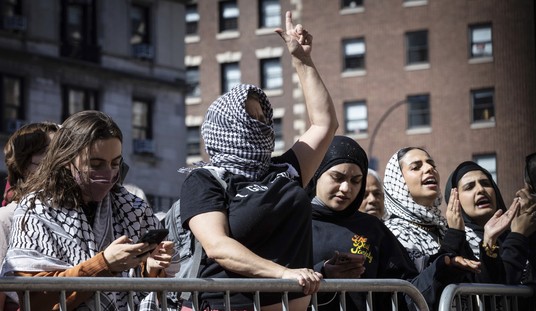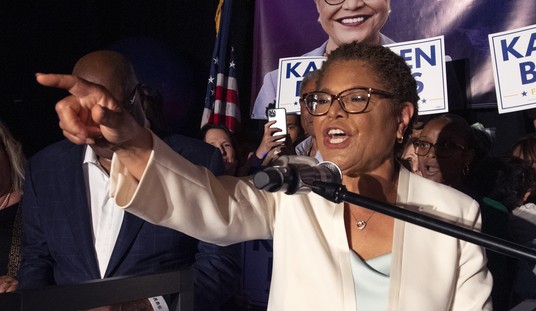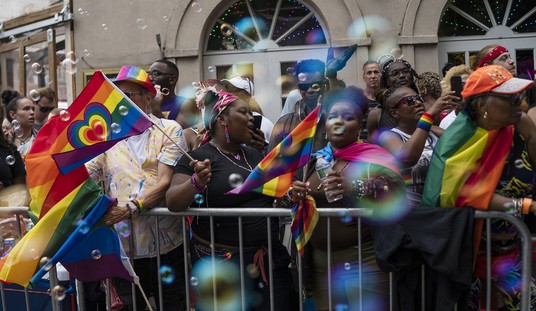Don the floral shirt, pop on the sunglasses, and grab your favorite mug — it is Tiki time.
One of the lasting trends that has endured in this country is the flashy, opulent, lush, garish, and outright fun experience that is Tiki Culture. Involving various elements from various locations and various people, it has become an amalgam of influences coalesced into a solitary and recognizable entity. In a way something that springs forth from things that are all from abroad, it is a wholly American product. Tiki is the embodiment of the idea of The Melting Pot.
While Polynesia is the general point of origin, there is no specific cultural origin. This is why a recent piece from the New York Times that attempted to join in on the outrage culture craze and impugn ‘Tiki’ as an offensive enterprise failed to gain traction. As I wrote on the topic at the time, not only were they unable to cite a specific or even general complaint, the lack of a central source meant the claimed offense could not be pinned down. Not only numerous countries but multiple continents are direct influences on the movement. To borrow from myself:
While invoking imagery from far away lands, what we regard as Tiki culture in this country is a distinctly American enterprise. It began well before the article’s claims. Things first emerged in the 1800s, and decades later bloomed with American servicemen staged in the Pacific becoming enamored with the vistas and people they encountered. The early 1900s had numerous books published about the tropical Edens, including writings from Herman Melville.
This underscores the ersatz nature and heavily fictional component of Polynesian pop. It is not stealing another’s culture, it is largely the fabrication of a varied collection of touchstones by creating new aspects based on wide influences.
Hawaii, Tahiti, Japan, Asia, South America, and the Caribbean all have channeled their versions of things into the trend’s inspirational pool. Numerous items were responsible for fueling the passion for things from far-flung, foreign lands. At the turn of the 1900s, travel romanticism was a key component, and then airlines becoming mainstream was a factor. Our troops stationed in the Pacific also brought back tales of exotica, and Hollywood used these mystical lands as a set-piece.
But unquestionably, the main reason things became cemented into the American psyche was a direct result of the emergence of the Tiki bar.
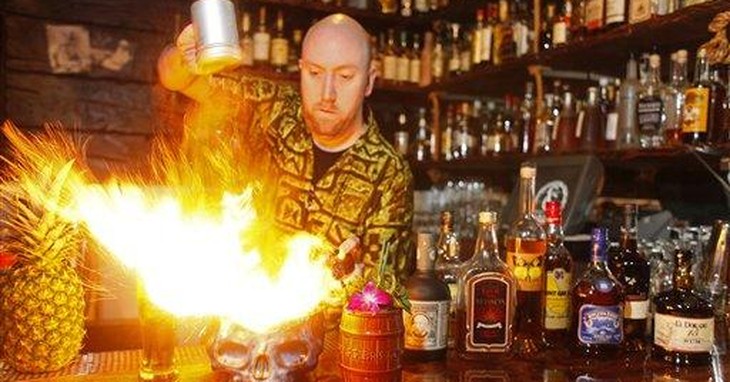
THE ORIGINAL STAY-CATION
One of the petty gripes in the Times’ piece was that if you walk into a Tiki bar, you will see white guys behind the bar decorated with items from a country where the people are allegedly oppressed, and maybe cannot escape. The problem: which country?! The items on display may not only be from numerous locations, they just as likely were wholly fabricated. This is why Tiki is a largely American pursuit; not only did we take in influences from all over, it is mostly made up, and made in America.
Tiki bars became known in the 1930s, with two prominent entries becoming hits, and then becoming influences — Don The Beachcomber, and Trader Vic’s. In the 1930s rum had fallen out of style. Gin was the prevailing liquor, with whiskeys following up. But then, Ernest Beaumont-Gantt arrived in Hollywood, California, from New Orleans. He opened his own bar, festooned the place with palm trees and an exotic motif, and worked at crafting an extensive drink menu comprised of rum combinations. The Hollywood set soon flocked, and an empire was launched. Gantt changed his name legally to Don Beach, and the Beachcomber name was licensed across the country in the decades that followed.
Around the same time, in the San Francisco Bay area, Victor Bergeron opened a bar that caught on with the locals: a small beer joint where he also was plying his trade as an innovator of Polynesian food. As he traveled, he was always looking for inspiration and new influences, and he made a stop in Los Angeles. That took him to Don The Beachcomber’s, and the inspiration took root. Once back in Oakland, he renovated his place, going full- Polynesia and renaming it Trader Vic’s. This led to numerous establishments across the country, recipe books, cocktail guides, and his own line of food and drink products.
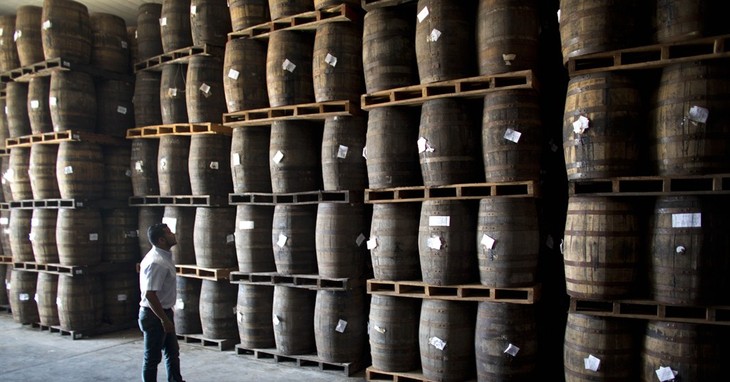
By the 1950s, Polynesian pop was all the rage, and the Tiki culture became embedded into the national consciousness. As its passion ebbs and flows over the generations, it never truly has departed. This is an entity that encapsulates so many aspects of our lifestyles; drinks, food, music, fashion, housewares, furnishings, and even gardening can all be employed in the enjoyment of ‘Tiki.’ It is truly a mindset, and for some, a lifestyle. At the heart of it all is always the cocktails.
Even in those eras when the Tiki tide was ebbing, there were signature drinks that always endured and could be turned to reinvigorate an individual in need of a respite. Periods of stress are nicely broken up by a Pina Colada. Long bouts of winter cabin fever can be endured with an infusion of a Mai Tai. Unable to spirit away from work means a vacation can be found in your grip with a Rum Runner. You do not need a Hawaiian shirt to let yourself get away…but it does always help.
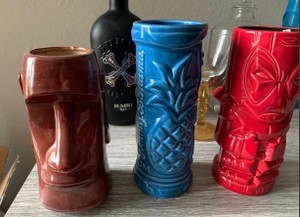
THE EVOCATIVE EXOTIC ELIXIRS
Tiki cocktails can be comprised of any of a number of elements, but for most people, they envision rum, coupled with a combination of fruit juices, served in a tall glass and accompanied with tropical garnishes. While these do apply, in the same fashion, there is no firm foundation to the Tiki mystique; there is all manner of freedom with the drinks.
One recommendation, though – get thee a Tiki mug. It is pointless, it is superfluous, and it is a vital component. no matter how primal and exotic your cocktail — it becomes more so in these vessels. Even a Rum and Coke becomes something else when supped from a porcelain island chalice. Here are some worthy island concoctions for your mug.
Mai Tai
This is a Trader Vic’s original. The main feature is the rum — so the higher grade you use, the better. A Bumbu XO is ideal here.
- 2oz. Aged Golden Rum
- 1/2oz. Triple Sec
- 1/4oz. Amaretto
- 1/2oz. Lime Juice
- 1/4oz. Simple Syrup
–Add all ingredients to a shaker with crushed ice. Shake well and pour into a highball glass. Garnish with a lime wedge and a mint sprig.
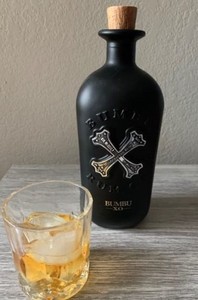
Scorpion
- 2oz. Golden Rum
- 2oz. Dark Rum
- 2oz. Cognac
- 1/4oz. Amaretto
- 2oz. Lime Juice
- 3oz. Orange Juice
–Place all ingredients in a blender with ice, blending to smooth. Float 151 Rum, garnish with spear of lime wedge and orange wheel.
Shrunken Head
This is a high potency cranial blast that epitomizes so much of the Tiki realm.
- 2oz. White Rum
- 2oz Golden Rum
- 1.5oz. Dark Rum
- 3oz. Orange Juice
- 3oz. Pineapple Juice
- 2oz. Pomegranate Juice
–Combine in a shaker with ice and shake well until frost forms on the shaker. Pour into a Tiki mug, float 1/2 oz. of 151 Rum. Light the floater while serving
[ Note: There is an extremely high likelihood that Tiki drinks will be a regular feature in future installments of this column. ]







